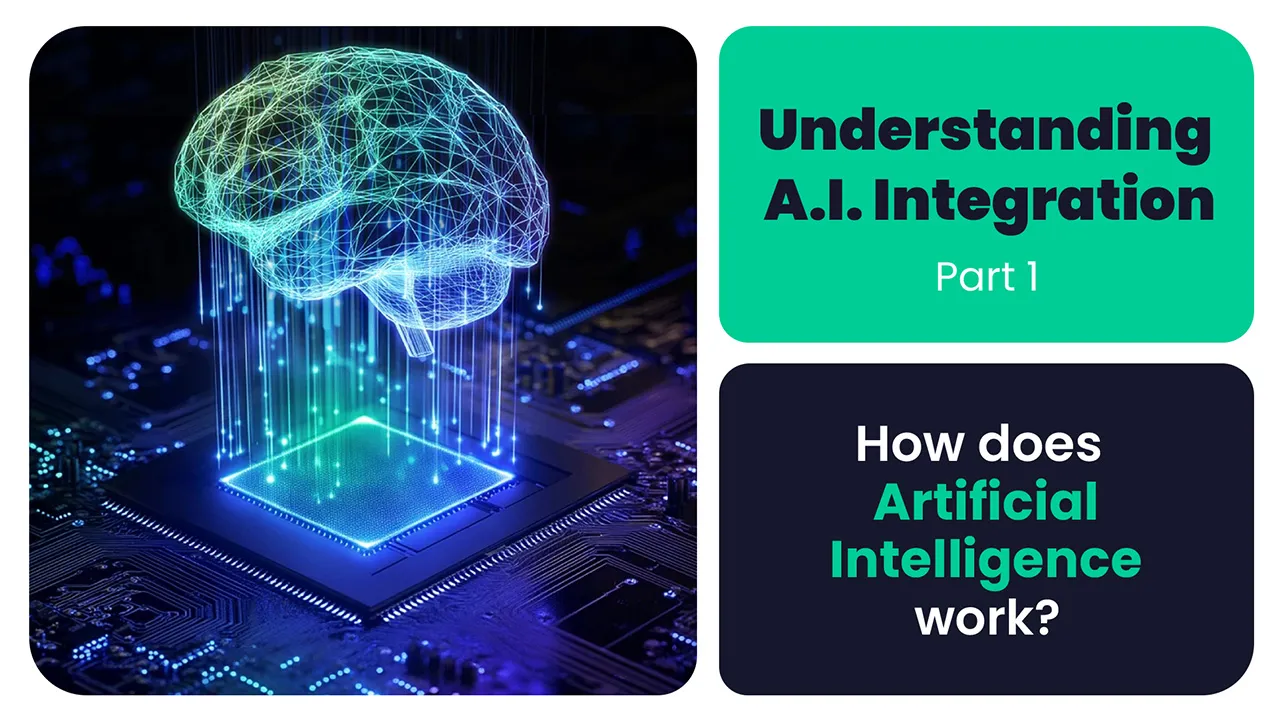There is an obvious impact that artificial intelligence has brought in marketing and business operations in general, and companies benefit from it every day.
However, through all the digital noise surrounding A.I. based digital transformation and digital innovation, there is still a struggle in the business environment to understand how A.I. actual work.

A.I. or not A.I?
First of all, to understand how you can benefit from all that A.I. integration has to offer, you need to understand how A.I. works. We are not talking about technical explanations and we don’t aim to unveil the mystery, just to help you better understand how it can help your business.
You hear about A.I. everywhere, but what is really A.I. and what is A.I. integration?
Basis A.I. modules
Base AI modules are individual instruments or tools that utilize specific A.I. algorithms to perform specific tasks.
They usually respond to a specific domain of expertise, but can perform multiple tasks within that domain. For example, a language processor, such as Chat GPT or Gemini, can generate text, answer questions, translate, review and correct or any other task in his field of trained expertise, but that’s all it can do.
There are a lot of fields that AI modules can be trained in, such as text generator, image generator, video generator, code writing, vocal or recognition systems (image, voice, video etc.).
They are created to work by themselves or as an integrated part of another platform, and they are the real engine behind the A.I. revolution.
A.I. based platforms
Unlike basis A.I. modules, A.I. based platforms don’t actually have A.I. code written in them. They integrate A.I. modules using APIs, to leverage the power of Artificial Intelligence. This way, they can integrate multiple A.I. modules to respond to more complex needs, that requires multiple A.I. capabilities (domains of expertise).
Additionally, these platforms have user friendly dashboards that are created to respond to certain types of user interaction.
For example, a virtual assistant application might use a natural language processing module for understanding and generating text, a speech recognition module for converting spoken words into text, and a text-to-speech module for responding verbally. Same way, an A.I. powered e-commerce platform might use a recommendation engine to suggest products, a chatbot for customer service, and an image recognition system to analyze product images.
Before getting confused, you should know that there are companies that develop their own A.I. modules to integrate in their own platform, such as Meta.
Conclusions
Based on your digitalization and optimisation needs, you can directly use a basis A.I. module, pick one of the many A.I. powered platform available online or even develop your own platform and integrate A.I. directly in it, customizing the way artificial intelligence helps you on your specific needs. Discover more specific ways to use A.I. in the next article.
Similar Articles
Want to chat more about this topic or any other topic?
Book a meeting with one of our digital monsters!
